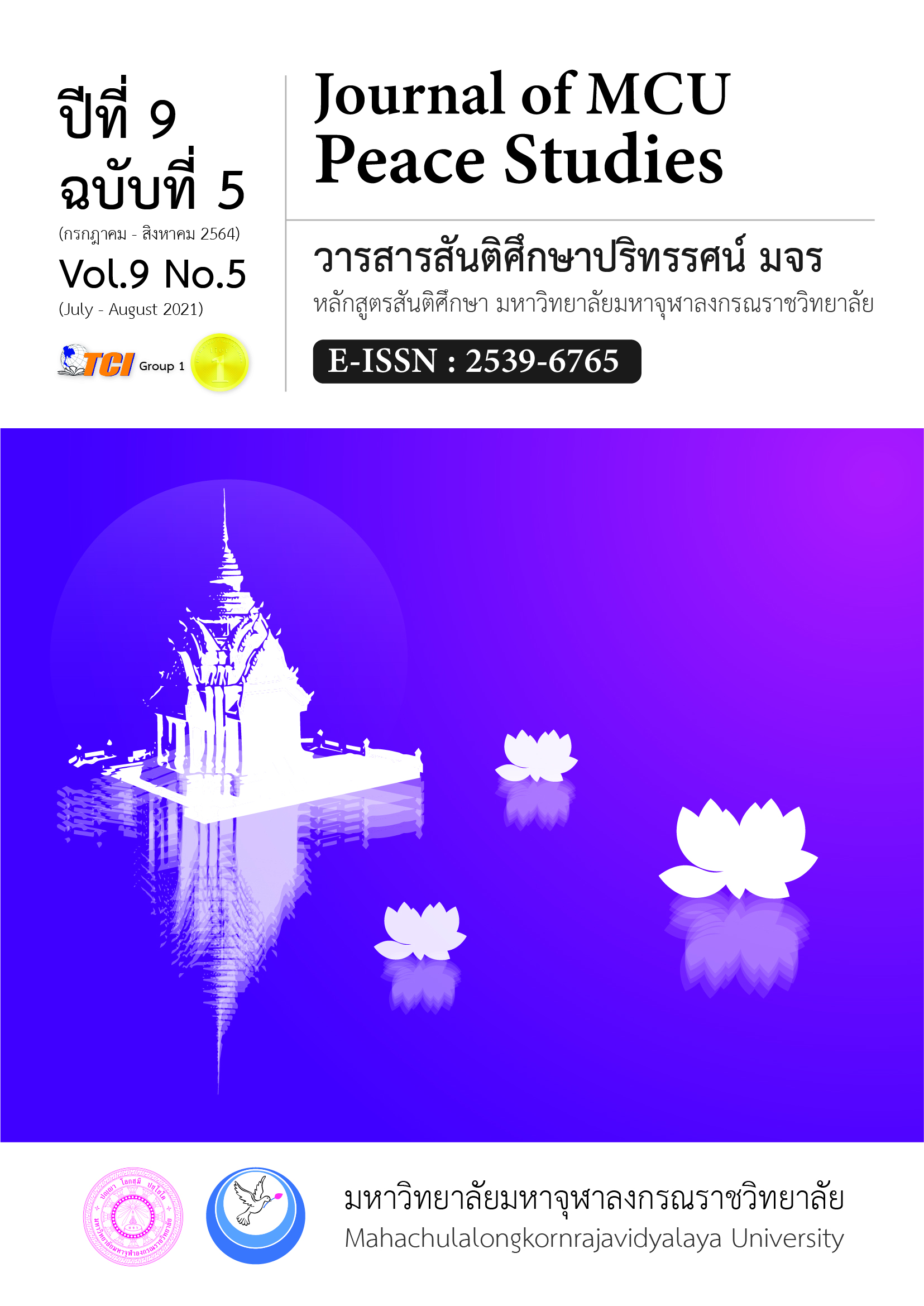Factors Affecting Changes in Number of Novices in Buddhism
Main Article Content
Abstract
This study aims to find factors affecting changes in number of Buddhist novices in Thailand, through the use of variables that reflect the development or change in demography, society, economy, education, religion, and technology. Aforementioned variable data of 77 provinces during 2013-2017 from national statistical office was used to utilize in this study. Panel data analysis namely Fixed-effect regression and Random effect models were used to analyze this dataset.
The results found that; 1) educational factor (as measured from Ratio of Population between 5-19 years old per Number of Schools), religious factor (Ratio of Population per 1 Monk), and technology factor (Percentage of Population aged 6 and over who use Mobile Phones) have a negative impact on the number of novices at a significant level. 2) demographic factor (Number of Male Population between 10-19 years old), and social factors (Number of Divorces and Percentage of Municipality Residents) have a significant positive impact. And 3) economic factor (Real Gross Provincial Products per Capita) has a negative effect but not significant. The results can be utilized to launch policies or strategies in order to motivate novice ordination and increase the quality of novices in relevant departments or sectors.
Article Details

This work is licensed under a Creative Commons Attribution-NonCommercial-NoDerivatives 4.0 International License.
Views and opinions expressed in the articles published by The Journal of MCU Peace Studies, are of responsibility by such authors but not the editors and do not necessarily reflect those of the editors.
References
Boonnoon, C. (2011). The Decrease of Buddhist Monks, and How it Affects to Buddhism in the Future. Journal of Buddhist Studies Chulalongkorn University, 18(3), 7-29.
Bunnakornkul, W. ( 2019) . Falling of Novices! Less than 500 in 45 years. Retrieved April 18, 2020, from https://www.banmuang.co.th/news/education/145362
Bunsathit, S. ( 1999). The Status, The Roles, and The Problems of Buddhist Novices in Thai Society. (Master’s Thesis). Mahidol University. Bangkok.
Kraipornsak, P. (2016). Econometrics. (1st ed.). Bangkok: Chulalongkorn University Press.
Mourao, P.R. (2006). Why is the Number of Catholic Priest Diminishing in Portugal? Analysis of the Period 1960-2002. Regional and Sectoral Economic Studies, 6(2), 43-56.
_________. (2011). Determinants of the number of Catholic priests to Catholics in Europe – an economic explanation. Review of Religious Research, 52(4), 427–438.
National Statistical Office. (2020). Key Statistical Data. Retrieved March 1, 2020, from http://statbbi.nso.go.th/staticreport/page/sector/th/03.aspx
Office of the National Economic and Social Development Council. (2020). Gross Regional and Provincial Product Chain Volume Measures 2018 Edition. Retrieved March 1, 2020, from https://www.nesdc.go.th/ewt_w3c/main.php?filename=gross_regional
Phramaha Suwit Dhammikamuni, & Homthuanlum, T. (2018). The Motivation for Novice Ordination in Thai Society. Journal of Graduate Studies Review, 14(2), 55-65.
Phramaha Tawee Visaratho. ( 2017) . Buddhist Heirdom Ordination in Theravada Buddhism. Journal of MCU Social Science Review, 6(1), 15-25.
Pinta, P. (2006). Crisis of Decreasing Number of Monks and Novices in Chiang Mai. (Master’s Thesis). Chiang Mai University. Chiang Mai.
Punyasavatsut, A. (2016). Determinants of the Weighted Crime Rate in Thailand. Journal of Economics Business and Management, 4(2), 161-165.
Tamkarn, Y. ( 2014). Home, Temple and School Influence the Use of Sufficiency Economy to Promote Family Strength. Journal of Human Resources Intelligence, 9(1), 12-31.
Tantivechayanon, P. ( 2016) . Buddhist Methods Develop Ruined Temples in Thailand to be Brilliant Temples. Journal of MCU Social Development, 1(2), 9-19.

